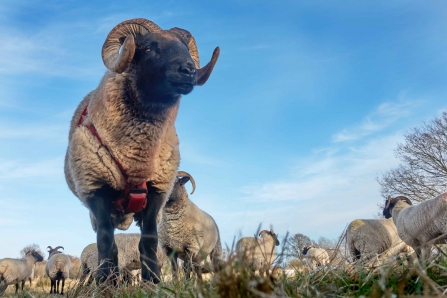Hundreds of years ago, people cleared the land of trees to form open spaces for farming. Their grazing animals helped to shape many of our semi-natural habitats, which developed rich and diverse wildlife communities. Our grassland, meadows, moorland and heathland habitats were all shaped by human activity and grazing is often the most effective and sustainable way to maintain them and their huge variety of plants and animals.
Stocking densities for conservation grazing are usually low and the timing and duration of grazing is carefully managed. Both over- and under-grazing will reduce the wildlife value of a habitat, so we produce management plans for each grazed site outlining the grazing regime required to maintain or restore the habitats found there.
Livestock grazing has a less instantaneous impact than burning or cutting, so allows less-mobile wildlife to thrive. The grazing animals can also access areas that machinery can’t. Some of the cattle seen at the Great Fen are native target breeds - rarer breeds of British cattle - which are suited to rougher grazing conditions compared to some of the more typical breeds you may see on conventional farms.
Sheep are more selective than cows and have small, thin lips allowing them to select plants within a small patch due to their ability to nibble. They leave taller and coarser vegetation but are able to select finer more palatable leaves and are able to move plant material aside and will graze the smaller plants underneath. Sheep species on the Great Fen include Hebridean, Romney and Highlanders.
The Great Fen team work closely with local farmers offering land for grazing, encouraging their animals to roam over a large an area to enable grazing to be as effective as possible, preventing the concentration of too many animals in one place. Nearly all grazing ceases from 15th March to 1st June to prevent disturbance to breeding birds.

Photo credit : The Great Fen - Sheep at Corneys